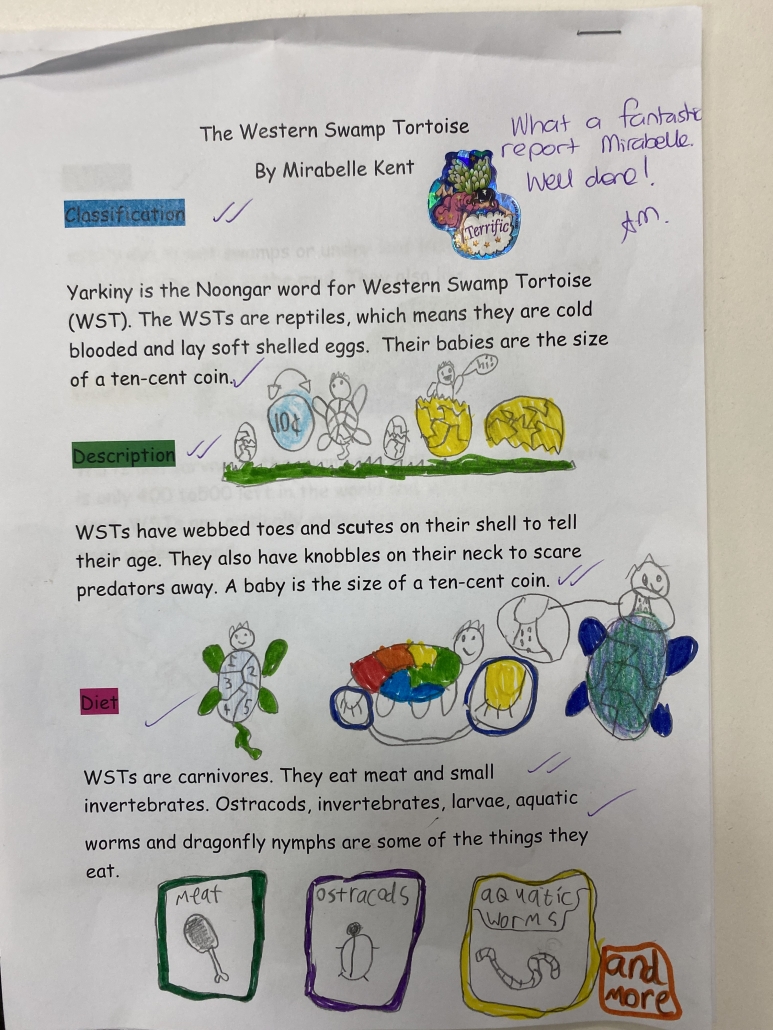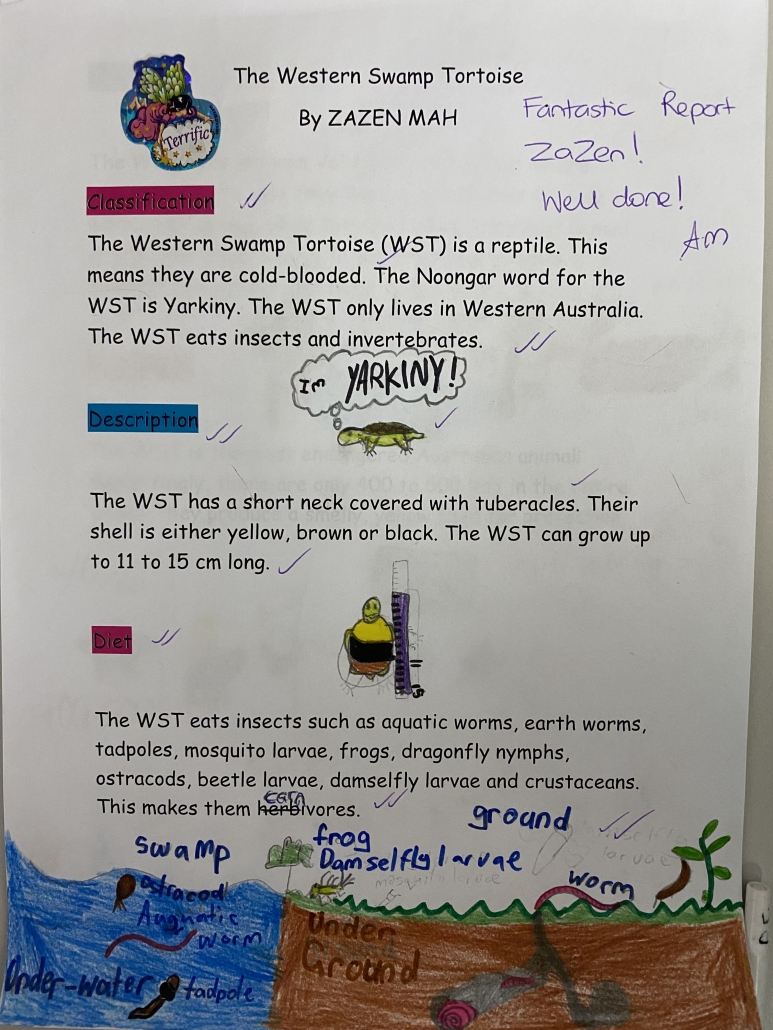Education team: Q&A time with Gooseberry Hill Primary School students

Learning about the WST with the Year 5 students. Cathy Levett took questions from the children and grouped them according to topic, then answered them as follows.
Q: How fast do they move? How fast are they in the water / on land?
Not very fast on land but when they get to the water they can quickly swim into the plants and disappear.
Western Swamp Tortoises are reptiles so they are ectothermic (cold blooded). This means that they need to bask in the sun and warm up so they can move a bit faster.
Q: How big do they grow?
A newly hatched WST is 2.4 – 2.9cm and 3.2 – 6.6g
WST are unusual because the adult males grow to be bigger and heavier than the female.
Males – up to 15.5 cm and 550g
Females – up to 13.5 cm and 410g
Q: Can you explain how their shell gets bigger?
The shell of the WST is part of the skeleton and so it grows as the skeleton grows. The scutes on the shell peel away to make way for larger scutes.
The parts of the shell are called:
CARAPACE – the hard upper shell
PLASTRON – flat lower part of the shell
Q: What do they eat?
Information on Gooseberry Hill Research page by the children
Diet (what they eat and drink)
Carnivores that eat small invertebrates; tadpoles, mosquito lavae, frogs, dragonfly nymphs, ostracods, beetle larvae, damselfly larvae, worms.
Q: Why do they live in one place? Why don’t they stay in the water for long?
WST have special needs for where they live. They live in and near ephemeral swamps which are wet in winter and dry in summer. They have clay or sand over clay soils. When the swamp dries out the tortoises move away from the swamp area and go underground until the swamps fill with water and food again. They do this so that they can survive without food through all of the dry months.
Q: Aestivation: How does it feel when they are aestivating? How do they live underground? How will they breathe when they aestivate?
While they are aestivating, it is like they are in a very deep sleep and their breathing slows down. Although they are underground, they get air from the spaces between the soil particles.



